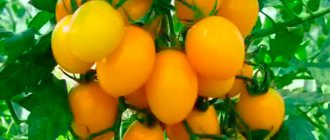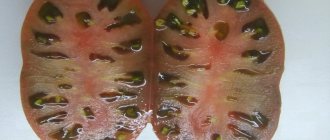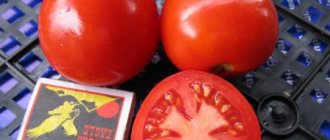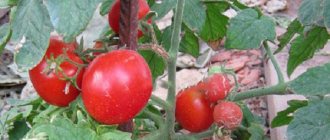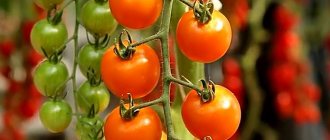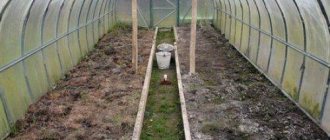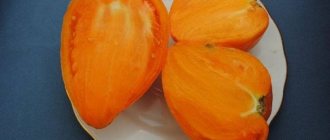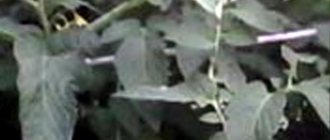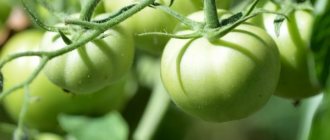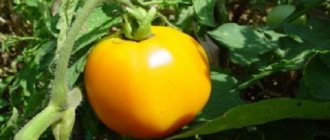Features of planting and caring for a pear tree
To get a rich harvest on your personal plot means taking into account the features of planting a tree:
Choosing a location. In many regions of Siberia, strong winds are a common occurrence. It is better to plant fruit trees close to buildings, which will serve as protection from the onslaught of gusts of wind. However, further from poplars, where the leaf roller (one of the main pests of pears) likes to breed. For the winter, it is recommended to cover the bushes with agrofibre. Time. It is better to plant young pears and shrubs in the fall. Fertilizer application
It is important to feed the pear if you want to grow a rich harvest. After digging a hole, organic matter (superphosphate) is added to feed the root system. Trimming
The roots of the plant grow slowly, and nutrition comes to the upper part of the trees. In order to increase productivity, the upper dry branches of seedlings are pruned immediately after planting.
If the area of the plot is small, then it is reasonable to grow columnar varieties.
After planting pear trees, it is important to provide proper care from the first day:
- Watering. Effectively carry out sprinkler irrigation. If it is not possible to install such a system, then the trees under each bush are watered in the usual way twice: in spring and summer. Also when the crop ripens.
- Feeding. Fruit trees are responsive to organic matter, which is applied once per season. Humus and urea increase productivity. Potassium chloride can be added to the soil up to 3 times.
- Preventive measures. The main pests of pear are fruit rot, leaf roller, and sooty fungus. For the purpose of protection, treatment is carried out with Bordeaux mixture, a fungicidal solution for spraying.
Bacteriosis often infects pears. Symptoms – black clogged channels appear on the cut branches, leaves turn black. Such branches need to be removed, the cut area should be watered with vodka and alcohol, and then covered with garden varnish.
Features of planting and care
Tomatoes are grown in seedlings. Seeds collected from tomatoes grown on the site remain viable for up to 3 years. The Blue Pear variety is not prone to degeneration. Before sowing, the collected material is placed in an antifungal drug or manganese solution for 2-3 hours.
Seedlings are planted in April:
- The containers are filled with fertile substrate that has previously been calcined.
- Deepen the furrows by 1.5 cm and spread the seeds every 1 cm, cover with substrate, and moisten.
- The containers are covered with film, and after germination the covering material is removed.
When the plant forms three leaves, it is picked
When the soil warms up to +17 0C and the weather stabilizes, seedlings of the Blue Pear variety are planted on the plot. In each climate zone, planting dates are individual. They stretch throughout May. It can be placed in the greenhouse at the end of April.
Landing:
- The soil is dug up, complex mineral fertilizer and compost are applied.
- You can plant seedlings in separate holes or in a continuous furrow at a distance of 40 cm.
- The tomato is placed at a right angle so that the stem and roots lie on the ground, cover with leaves, and water.
When buds appear on the tomato, it is hilled up, a bush is formed and the soil is covered with mulch.
Agricultural technology of tomato variety Blue Pear:
- Weeds are removed when they first sprout.
- If there is no mulch, loosen the soil near the bushes.
- Fertilizing is a prerequisite for growing Blue Pear tomato. Fertilizers are applied from the moment of budding until the end of fruiting. Alternate superphosphate, potash, and phosphorus, maintaining an interval of 20 days. Liquid organic matter is given every week.
- Water the tomato at the root every evening. It will take approximately 7 liters for each bush.
The stems are constantly tied up, the lateral shoots, lower leaves and empty brushes are removed.
Care
Let's get acquainted with the features of caring for red pear tomatoes.
Top dressing
Tomatoes need two minerals in particular: phosphorus and potassium. Apply these microelements throughout the growing season, keeping a break of 4 weeks between feedings. Before fruit ovaries begin to form, nitrogen fertilizing is also recommended.
In addition to mineral supplements, you can also use folk remedies:
- ash solution;
- herbal infusion.
Loosening
The soil in the tomato bed should always remain permeable. To achieve this, be sure to loosen the soil after watering and rain (if we are talking about open ground).
Pruning, pinching
Since the variety is indeterminate, the above procedures cannot be avoided. Usually the bush forms one or two stems - this is quite enough to achieve the optimal ratio of the size of the fruits and their quantity.
Characteristics of the variety
Breeders crossed several different varieties, and to the delight of gardeners, they brought out completely new pear-shaped tomatoes.
The following varieties were identified within the variety:
- black;
- red;
- pink;
- orange;
- cuneo (giant fruit);
- emerald (this is new)
The Siberian red pear variety was specially created for growing tomatoes in cold areas.
The varieties differ in external characteristics, but have a number of common characteristics:
- tolerate heat and cold well, but cannot tolerate drafts;
- are stored for a long time;
- do not lose their original appearance during long-term transportation.
- immunity to late blight;
- rapid maturation.
Description of the plant
The variety belongs to the carpal type; the bush needs shaping. Leave one or two stems on each. When the plants reach 0.5 m, they should be attached to supports. Remove the shoots on the stems until the vegetables are harvested.
The fruits are medium-sized, weigh about 100 - 140 g, classic tomatoes are bright scarlet in color, pear-shaped, with some ribs present.
The pulp is dense, practically without seeds. The taste successfully combines sweet notes with light sourness.
The fruits taste sweetish, the peel is dense and, most importantly, does not tend to crack
Ripening time
According to the description, the variety is mid-early: it takes 110–115 days from planting to harvest.
The lower leaves should be removed to ensure sufficient air exchange and prevent fungal diseases that periodically appear in vegetable crops, especially in insufficiently ventilated greenhouses.
Area of application of fruits
Fruits are delicious in any form
Red Pear tomatoes are ideal for preparing for the winter. The look is very decorative, not to mention the unforgettable taste. Their pleasant feature is that the peel does not crack during heat treatment, and the taste is impeccable.
You can also cook from them:
- vegetable salads;
- lecho;
- thick ketchups;
- pastes;
- pickled and salted tomatoes.
It turns out very beautifully if tomatoes of different colors are pickled in a jar - pink, black, etc.
Pear-shaped tomatoes are used both for vegetable caviar and for pizza. They are also dried, dried, and frozen. But they look especially good in marinades.
Description and characteristics of the variety
Blue pear is an indeterminate tall variety; the bushes reach a height of 1.5 m, in a greenhouse up to 1.8 m. They require gartering and shaping.
Better results can be achieved when growing bushes in 2 shoots.
Ripening time is average - 110-125 days from germination.
The average weight of tomatoes is 100-150 g. The skin is purple. The flesh at the break is fleshy, red in color.
What are anthocyanins
Anthocyanins began to interest scientists back in the 17th century and today are almost completely studied. These are substances that give plant tissues purple, scarlet, red, pink, orange, dark blue and cyan shades. Anthocyanins are biologically active molecules, and therefore are responsible not only for the beauty, but also for the usefulness of dyed fabrics.
The benefits of anthocyanins are great, adding them to the diet:
- reduces the likelihood of developing certain types of cancer;
- activates metabolism;
- provides prevention of the gastrointestinal tract and cardiovascular system;
- strengthens the retina of the eye;
- delays diseases of old age, including senile dementia;
- reduces swelling;
- has an antibacterial effect;
- improves the condition of connective tissues;
- reduces blood pressure;
- increases immunity.
Original name of the tomato OSU Blue, USA.
To summarize, anthocyanins are powerful antioxidants that protect the cells of the human body from degeneration and aging. However, they are not synthesized in the human body. To maintain health, you need to consume 15 ml of the substance per day, and in a state of illness twice as much.
The leaders in the amount of anthocyanins are considered to be berries and vegetables of black and dark purple color. These include tomatoes, especially blue and purple colors.
Michael Pollan
Photo by Inna Biryuk
Photo by Vasara Vasara and Olga Musina
The variety is indeterminate, but, in comparison with other similar varieties, it is not very tall - up to 1.2 m. However, you cannot do without a garter. The fruits are collected in clusters, each of which can contain 30 or more tomatoes. For this reason, a mandatory garter is required not only for the stem, but also for the brushes. They need to be secured in several places so that they do not break under their own weight.
The fruits are beautiful pear-shaped. They are green in color (green-yellow when ripe) with green stripes. The tomatoes are small: the weight of each does not exceed 80-100 g. The taste is unusual, with fruity notes. Tomatoes of this variety are suitable for salads and canning.
Ekaterina Golovinova: “I like it because it grows in clusters of up to 100 pieces. Compared to large fruits, it’s so-so in salads, but absolutely incomparable when pickled. It has a thin skin that does not separate; you can say you don’t feel it. It absorbs what you wanted to give it with the marinade without overpowering it with its taste. I marinate in honey and apple cider vinegar. Sometimes without vinegar, in apple juice. It’s just a masterpiece, really!”
Not all tomato lovers know that a green tomato does not always mean unripe. We hope that after the feedback from our readers, you will also be interested in unusual green-fruited tomatoes, and our TOP 7 will help you decide on the choice of the best variety.
Dwarfs and giants
Pear-shaped tomatoes can be of the cherry type. These are miniature tomatoes that weigh only 15-20 g. The small size of the berries is compensated by the number of them on each bunch: up to 30 pcs. and more. This variety of tomato bush looks more like a grapevine with red or yellow clusters.
The abundance of cherry tomato varieties makes it difficult to choose. It is better to choose those that are suitable for the owner himself. You need to pay attention to its suitability for growing in open or closed ground, on a balcony or windowsill. Among cherry tomatoes there are both compact and tall varieties.
The most popular tomatoes in Russia are Honey Drop tomatoes. The berries are drop-shaped, with a thin base. Lemon skin color (Honey drop yellow). The red date reminds her a little. The German cherry tomato Ildi, which has long been known in Russia, is distinguished by its tall stature and cluster type of fruiting. They have ovoid berries and amber-yellow color. The old French variety Lily of the Valley (scarlet, with a sharp tip) is popular throughout Russia.
Of the modern hybrids, the pear-shaped varieties Barberry, Ira (red), Lisa (orange), Yellow submarine and Kira (yellow) deserve attention. Of the new products, we can especially highlight the Shy Blush: bicolor tomatoes have yellow and orange stripes. These varieties have fruity flavors and aroma.
Giant tomatoes include those that can gain weight of more than 300-400 g. They are especially good for fresh consumption: they have a delicate pulp consistency and thin skin. Among them you can also find red and yellow berries; recently, unusually colored ones have also appeared.
Among the latter, the Mexican variety Tlacolula stands out: the pear-shaped fruit is covered with numerous ribs. The color of the ripe berry is bright red; on the shoulders of the “pear” there are golden areas that make the tomato more decorative. The taste is sweet, with sourness and a fruity tint. The weight of the fruit reaches 300-350 g. In Russian gardens it is recommended for cultivation in a greenhouse.
See also
At what distance should you plant tomatoes in a greenhouse, diagrams and placement rules
Read
Tomatoes Heart of a Bull or Heart of a Buffalo (Spain) can grow up to 600 g. To do this, you need to leave no more than 3-4 ovaries on the hand. The average weight that tomatoes can gain with the usual growing method does not exceed 350 g. In Russia it grows well only in greenhouses.
Domestic varieties Puzata Khata, Hundred Poods and similar beef tomatoes (pear-shaped) are modern hybrids that are resistant to many diseases and are intended for open ground.
Most of them begin to bear fruit 100-110 days after sowing and are considered early, but in the short and cool summers of the Urals and Siberia, most of the tomatoes remain unripe. They can be collected in the stage of milky ripeness; they will ripen in boxes in the pantry. Such tomatoes will lose their richness of taste and will not turn out very beautiful, but they are quite suitable for processing into juice and sauces.
A common feature of giant tomatoes is their fleshy texture. Their seed chambers are few in number and small in size. All the space inside the berry is occupied by juicy contents. The density of these tomatoes is low, but they store well. Beef tomatoes are convenient to use for slices and hamburgers.
The medium-sized varieties of the Truffle series (red, yellow, black), Liguria, Arawak, Accordion, Chalma, etc. also have a similar pulp structure. Most often these are medium-sized tomatoes (100-200 g). Small fruits (up to 150 g) can be used for whole-fruit canning, and larger berries are suitable for salads. Among these varieties there are also unusually colored ones: Flanders Contrast (bicolor, yellow-phtolet) and Wine Jug (purple). They can make a vegetable dish even more picturesque.
Growing rules
To plant a tomato, you must follow the following rules:
- Planting is done on the sunny side of the site.
- Carry out regular watering. Sometimes each bush requires up to 15 liters per week.
- Do not pick fruits prematurely. Nutrient availability will be below normal.
- Seedlings are fertilized at an early stage of growth and after planting in the ground.
- For 1 sq. m, 4-5 bushes are planted.
- They tie it up on time.
- Regularly hill up the bushes to supply oxygen to the soil.
Planting seedlings
It is necessary to prepare soil for planting in the fall. The soil is saturated with oxygen and left in a cold place until the beginning of spring. During the winter the soil will freeze and there will be no larvae in it that eat the tomato seeds. At the time of planting, the soil is mixed with mineral fertilizers, compost, sand, and humus. You can also purchase high-quality soil at any hardware store.
Seeds can be purchased new or used from a previous planting. First, the seeds are checked for germination. To identify dummies, seeds are immersed in water for 10 minutes; the dummies will float to the surface. Seeds should be germinated at room temperature, in damp cotton cloth. Add water daily. On day 5-6, the seeds are planted in the ground.
Tomato transplant
Transplantation into beds is carried out at a constant temperature of 15 to 18°C. They make beds and fertilize them with compost or manure. Tomatoes are ready for planting when they are 15-20 cm tall. Planting is done at a depth of 10-15 cm so that the stem stands at a right angle. The distance between the bushes is up to 50 cm. After planting, the seedlings are watered.
A drip irrigation system is installed in the greenhouse; it can be automated. Fertilizing is carried out once a week, in a good microclimate once every 2 weeks. Mulch when the soil is stagnant at the roots of tomatoes.
Stepping algorithm:
- Disinfect equipment: garden shears, pruning shears. You can use regular scissors.
- At a distance of 1 cm from the base of the stem, the stepsons are cut at right angles.
- After cutting the shoots from one bush, the tool is disinfected.
Characteristics and description of the tomato variety Black Pear
The Black Pear tomato got its name due to its shape and dark color. Perfect for those who decide to grow unusual types of this vegetable crop on their property. The beneficial properties contained in them are not inferior to yellow and red tomatoes.
Description and characteristics of the species
All connoisseurs of unusual and tasty tomatoes will like the Black Pear tomato. It is not difficult to grow it, just follow the planting and care requirements. It all depends on the region of location, for example, Siberian weather requires cultivation under film cover.
- Bush: indeterminate.
- Barrel: hard.
- Stem: powerful and thick.
- Height: 1.5-1.8 m.
- Ripening time (from seed planting to harvesting): 110-130 days.
- First inflorescence: above the 10th leaf.
- Fruiting: long.
- Shape: pear-shaped, has an external resemblance to a pear.
- Weight: 50-90 gr.
- Color: dark burgundy, dark brown.
- The pulp has the same color as the peel.
- Skin: thin.
- Density: high.
- Transportability: excellent.
A description of the tomato variety will help those who doubt the positive qualities of the plant make a choice. After reviewing the information, you can immediately conclude that the plant is useful and positively characterized. Those who planted this type of tomato on their plots were pleased with the results.
Growing tomatoes
Tomatoes are mainly grown in greenhouses. (Central Russia and Siberia). In the southern regions, planting in open ground is possible. The land must be well fertilized. It is best to plant tomatoes in places where there is protection from the wind and plenty of sun. It is advisable to water with warm water, this will speed up fruiting and increase the volume of the harvest.
Tomato seeds for seedlings can be planted from February to April. It can be planted in the ground 50-70 days after germination. Depending on the region and weather conditions, planting dates are calculated individually.
It is recommended to grow tomatoes on a trellis, forming the plant into two trunks. To do this, leave the shoot that formed under the first brush. The rest are deleted. It definitely needs to be tied up.
During the growth of Black Pear tomatoes, it is necessary to periodically apply fertilizer, loosen and remove weeds.
To increase the fruiting period and harvest volumes, the growing point should be removed in a timely manner. This process is carried out after the appearance of 8 brushes.
Harvest volumes
With proper care and compliance with all planting requirements, the tomato yield is very high. One plant produces from 3 to 4 kg. If you plant 4 bushes per 1 m2, you can get a harvest of up to 15 kg.
Tomatoes begin to sing in July. If the summer is warm, the fruits are sweet.
It is best to allow the fruits to ripen on the bushes; when removed from the plant, they lose their taste.
Disease susceptibility
Characteristics of the tomato variety regarding resistance and susceptibility to diseases.
- Blackleg. Stems and leaves are affected. The causative agent is a fungus. Initially, plants are planted at a large distance from each other. And reduce the volume of watering. For prevention purposes, trichodermin is added to the soil before planting.
- Fusarium. Young tomatoes are susceptible to the disease. Favorable conditions for the spread of the disease are high air temperatures and insufficient lighting. They fight it in the following way. The diseased plant is removed along with the soil in which it grew. The rest are treated with phytosporin for preventive purposes.
- Dangerous pests include:
- Whitefly. To prevent them, tobacco is planted and the windows are closed.
- Spider mite. The insect is very small, but dangerous because it infests with entire colonies and destroys the plant, completely sucking the juices out of it. To combat them, the bush is treated with Fitoverm.
Eating
Black Pear tomatoes are perfect for all types of canning. They are used to decorate the festive table and prepare salads.
Tomatoes are used for making juices, and due to their shape and color they are excellent for assorted vegetables. Canned whole, the result is excellent taste and appearance.
Tomato Blue Pear: characteristics and description of the variety, photos, reviews, yield
The Blue Pear tomato got its name due to the characteristic shape and color of the fruit. The variety is known for its interesting taste - the tomatoes are sweet, with a pronounced spicy aroma, juicy and tender. They are perfect for preparing various dishes, as well as for homemade preparations for the winter.
Description of tomato variety Blue Pear with photo
The Blue Pear tomato was bred in Ukraine by breeder R. Dukhov. The variety is not included in the register of Russian achievements; it is found mainly in private farms. It can be grown both in greenhouses and in open ground.
Main characteristics of the variety:
- indeterminate (grows throughout the season);
- tall (150-200 cm);
- mid-ripening (fruits ripen in 115-125 days).
The stems are medium thick, the leaves are small, of normal structure, typical green color. The inflorescence is of a simple type, 5-6 Blue Pear tomatoes are formed on each flowering raceme. They got their name due to their characteristic pear-shaped shape and purple color.
Description of fruits
Tomatoes of the Blue Pear variety are very wide, up to 7-10 cm. The shape is pear-shaped, strongly ribbed, flattened. The surface is glossy, rich purple with splashes of red and, less often, green. The average weight of tomatoes is 100-120 g; specimens up to 200 g are less common.
The skin is quite dense, but at the same time soft. Therefore, the tomatoes do not crack. The taste is very pleasant, unique, with sweet notes. The aroma is rich, spicy. The pulp is juicy and dense, oily.
Blue pear tomatoes are colored deep purple
Blue Pear tomatoes contain anthocyanin, which determines the dark purple color (it is also found in plums, cherries, grapes and other fruits of the same color). The substance has antioxidant activity, so it can block the growth of cancer cells.
Characteristics of tomato Blue pear
Blue pear tomatoes are formed within 4 months from the moment the seeds are planted. Therefore, the first harvest is harvested in early July. The fruits ripen on the bush. They can also be sent to ripen in a dark, cool place. Peak fruiting occurs in July.
Blue pear tomato productivity and fruiting
Blue pear tomatoes are a fairly productive variety. There is evidence that up to 4.5 kg can be removed from 1 bush over the entire season.
| Conditions | Greenhouse | Open ground |
| From 1 bush, kg | 4-4,5 | 3-3,5 |
| From 1 m2, kg* | 12-14 | 9-10 |
*It is advisable to plant no more than 3 Blue Pear tomato bushes per 1 m2.
To obtain the greatest yield, Blue Pear tomatoes are grown in greenhouse conditions. In addition, you need to provide normal care, including:
- Regular watering and fertilizing.
- Formation of bushes with 1 or 2 stems.
- Constant ventilation of the greenhouse.
- Preventive treatment against fungal diseases and insect pests.
- Pinching is the removal of side shoots that do not bear inflorescences.
Area of application of fruits
Blue Pear tomatoes belong to the dessert group. They are great for salads, chopped vegetables and other cold appetizers. They can also be used to prepare various dishes:
- soups;
- sauces;
- puree;
- tomato juice;
- second courses;
- lecho and other preparations.
The skin of Blue Pear tomatoes does not crack, so they are suitable for whole-fruit canning. But some fruits are too wide and will not fit into the jars. Therefore, only medium tomatoes can be used for these purposes.
Resistance to diseases and pests
There is no clear data regarding the immunity of the Blue Pear tomato to diseases and insects. Therefore, in any case, it is worth carrying out preventive treatments before transplanting the bushes into open ground or into a greenhouse. For this you can use any fungicides. In the summer, an invasion of insects is possible - they are fought with home remedies or insecticides.
Advantages and disadvantages of the variety
The Blue Pear variety has an interesting appearance, original taste and aroma. In addition, 3-4 kg of tomatoes ripen on 1 bush, which also pleases many summer residents.
Blue pear tomatoes have time to ripen on the bush
- original taste;
- interesting color and shape;
- relative resistance to short-term cold snaps and drought;
- the fruits do not crack due to the strong skin;
- Blue Pear tomato grows well even in low light conditions;
- good yield.
- it is necessary to pin and tie to a support;
- not all fruits are suitable for whole-fruit canning;
- strongly pronounced ribbing (especially with improper care).
Features of cultivation
Seeds for seedlings begin to be sown from late February to mid-March. The seedlings grow for 60-65 days, after which they are transferred to open ground.
Soil for growing can be purchased at the store or made independently by mixing garden soil with peat and humus (in equal quantities).
It is first frozen (placed in the freezer for 5-7 days) or processed in the oven (15 minutes at 130 degrees).
Blue pear tomato seeds are immersed in 5% salt and those that float are discarded. Then they are pickled in a weak solution of potassium permanganate or any fungicide for several hours. They can be grown in peat tablets (to avoid picking) or in general containers - containers, boxes.
Instructions for planting and growing are as follows:
- The soil is loosened, furrows 1 cm deep are made and seeds are planted at intervals of 2-3 cm.
- Moisten, cover with film with holes and put in a warm place (temperature 25-27 degrees).
- After germination, the film is removed and cultivation continues at high temperatures. At the same time, you can illuminate with a phytolamp for up to 12-13 hours a day.
- They dive after 2-3 true leaves appear.
- Gradually reduce the temperature to room temperature.
- A week after picking, complex mineral fertilizer is applied.
- 10-15 days before transplanting into open ground, they are hardened at a temperature of 15-17 degrees.
On a cut of Blue Pear tomatoes, 7-10 seed chambers are visible
The seedlings are transferred to the greenhouse in early May, and to open ground in the middle of the month. The planting pattern is staggered, with an interval of 50 cm between bushes and 60 cm between rows. In the future, the rules of care are standard. Regular watering, 4-5 liters per bush once a week, 2 times in drought.
Fertilizing 2 times a month - complex mineral fertilizer alternating with liquid organic matter (mullein, droppings, slurry). The soil is mulched with peat, hay, regularly loosened and weeded. The bushes are tied to a support and constantly pruned. To do this, remove all side shoots without flowering racemes, not completely, but leaving a “stump” of 1-2 cm. The bush can be formed into 1 or 2 stems.
Conclusion
The Blue Pear tomato is an interesting variety that can be included in your home collection. Tomatoes have an original taste and spicy aroma that most other varieties do not have. The cultivation technology is simple, so almost any summer resident can cope with the care.
Blue Pear tomatoes are not common in Russia. They are grown on some subsidiary farms. The variety attracts with its productivity, interesting color and taste of tomatoes. Some gardeners note that after the lower part of the tomato turns red, the fruits begin to lose their shape. This does not prevent you from using them for preparing dishes and preparations for the winter. But overripe fruits are clearly not suitable for whole-fruit canning and for sale.
Source: https://2rediski.ru/tomat/sinyaya-grusha/
Growing tomatoes
It is preferable to grow through seedlings.
How to prepare seeds:
- Before sowing, a mandatory procedure is to check the seed material for germination. The seeds are placed in a 5% saline solution (a teaspoon of salt per 100 ml of water). Seeds that appear on the surface are not suitable for sowing;
- The high-quality planting material remaining at the bottom is soaked for 30 minutes in a pale solution of potassium permanganate. Then wash and dry.
IMPORTANT: Only self-collected seeds need pre-sowing preparation.
Sowing seed material:
- Seeds are sown between February and April;
- Containers for growing seedlings must have drainage holes and also be disinfected;
- To prepare the substrate, mix garden soil with humus in equal proportions. To destroy spores and bacteria, the soil mixture is steamed for 45 minutes in the oven at a temperature of +120 °C. It would also be a good idea to add coconut substrate, river sand, and vermiculite;
- Planting material is laid out on moist soil and sprinkled with dry soil;
- The container is covered with film. The seedlings are regularly ventilated; when the soil dries, the soil is moistened with a spray bottle. Maintain the room temperature at least +20 °C;
- As soon as the shoots emerge, remove the film. Then the seedlings are provided with 10-12 hours of daylight and maintain a temperature no higher than +18 °C. After 7 days, the temperature during the day should be +23...+25 °C, and at night within +18...20 °C;
- When two true leaves are formed, the seedlings are picked and fed with complex mineral fertilizer;
- Water as needed, fertilize once every 2 weeks;
- For better adaptation to a new location, seedlings are hardened off within 14 days before transplantation.
Rules for planting seedlings:
- Seedlings are transplanted to a permanent place at the age of 50-70 days. Specific dates are determined by the climatic and weather conditions of the growing region;
- It is better to choose a sunny site, protected from cold winds. The preparation of the beds begins a few days before transplanting. The soil is dug up, at the same time adding humus and compost, and also getting rid of weeds;
- The seedlings are planted in completely heated soil. The optimal time is evening;
- When planting, the following scheme is observed: row spacing - 70 cm, interval between bushes - 30 cm. Planting holes are watered abundantly with warm water; the use of a pale pink manganese solution is allowed. In advance, stakes (1.5 -1.7 m) are installed near the holes for further gartering of bushes;
- After complete absorption of moisture, transplantation begins. Tomato bushes are planted together with a lump of earth, after watering abundantly;
- Planted seedlings are watered abundantly.
Description:
Preparing and planting seeds
Follow the rules when planting seeds
To successfully grow Red Pear tomatoes, you need to properly prepare the seeds for planting. Professional advice will help you with this.
- If you decide to grow a variety of pear-shaped tomatoes for the first time, you should purchase seeds in advance. This can be done both in the store and on the market or via the Internet, where there is a huge selection of different manufacturing companies. For example, many gardeners prefer Aelita.
- First, soak them in a 1% solution of potassium permanganate. This will not only disinfect the seeds, but will also help sort out the options that are unsuitable for planting (during this procedure they will certainly settle to the bottom of the glass).
- You should be very careful when choosing soil for planting seeds. It is best to mix regular soil with peat and humus, or buy ready-made soil in specialized stores.
- It is best to sow healthy material in small containers, such as plastic cups. Do not pour more than 2-3 seeds into one container, because when they germinate, they will interfere with each other very much.
- Once finished, the containers should be hidden in a dark place. Don't forget to cover them with plastic wrap when loading.
- Wait for the sprouts to hatch, remove the film, and transfer the seedlings to a bright and well-lit place. This could be a kitchen or a balcony, but it must be insulated.
- It is necessary to grow seedlings until they have 5-6 leaves.
Advantages of the variety
Giving a description of tomatoes belonging to the Red Pear variety, vegetable growers note a number of undeniable advantages of this species, which distinguish it from other tomatoes. The characteristics are as follows:
- high yield and immunity to temperature changes: fruits are successfully grown and bear fruit even when there is a cold Siberian summer outside;
- pear-shaped tomatoes are not whimsical and do not require constant care;
- they grow well both in open and closed ground;
- are resistant to various diseases;
- The fruits are easily transported and do not spoil for a long time during storage.
Flaws
Since a tomato belonging to the pear-shaped red variety, unlike other indeterminate types of tomatoes, should be grown in 2 stems, it has only one drawback - it requires mandatory formation and tying of the bush. Spend time on these goals, and then the plant will definitely surprise you with a bountiful harvest.
The description of the variety allows us to conclude that apart from this minor point, the breeder will not have any problems with this plant.
Advantages and disadvantages of colorful vegetables
Tomato has a number of advantages:
- The tomato attracts with its appearance and taste.
- Tomato products are made from the fruits and eaten fresh.
- The yield of 1 bush can reach 4.5 kg.
- Tomato is characterized by resistance to cold and hot weather.
- Tomatoes are not prone to cracking.
- The culture is insensitive to lack of lighting.
The disadvantages are:
- the need for regular stepsoning;
- deepening of ribbing due to improper care.
Tomato Pink Pear: variety description
| Variety name | pink pear |
| general description | Mid-season indeterminate variety |
| Originator | Russia |
| Ripening period | 116-122 days |
| Form | Pear-shaped |
| Color | Pink |
| Average weight of tomatoes | 70-90 grams |
| Application | Universal |
| Productivity of the variety | 9-11 kg per sq.m |
| Features of cultivation | Garter required |
| Disease resistance | No data |
A tomato with medium fruit ripening. From planting seeds to harvesting the first harvest, the period is 116-122 days. The variety is recommended for cultivation in greenhouses, except in the southern regions of Russia, where it is possible to plant seedlings in open ridges. The bush is indeterminate. Reaches a height of 1.4-1.8 meters. In a greenhouse it can grow up to 2.1 meters.
The best results are achieved by bushes formed by one stem. The remaining stepsons need to be removed. It is necessary to tie the bushes to a vertical support or form them on a trellis. Gardeners who grew this variety do not recommend leaving more than 7-8 clusters.
Fruit characteristics:
- Nice deep pink color.
- The shape is pear-shaped, slightly elongated.
- Fruit weight is 70-80 in open ground, up to 90 in a greenhouse.
- Universal use, excellent taste when preparing sauces and juices, well suited for whole-fruit canning.
- Productivity is 9.0-10.7 kilograms per square meter, when planting no more than 4 plants.
- Excellent presentation, high safety during transportation.
You can compare the weight of the fruits of this variety with others in the table below:
| Variety name | Fruit weight |
| pink pear | 70-90 grams |
| Banana Orange | 100g |
| Honey saved | 200-600 grams |
| Rosemary pound | 400-500 grams |
| Persimmon | 350-400 grams |
| Dimensionless | up to 100 grams |
| f1 favorite | 115-140 grams |
| Pink flamingo | 150-450 grams |
| Black Moor | 50 grams |
| Early love | 85-95 grams |
Advantages of the variety:
- Great taste.
- Versatility of use.
- Even weight and size of tomatoes.
Flaws:
- The need for tying.
- Tendency to cracking of fruits.
- Stepson requirement.
You can compare the yield of this variety with others in the table below:
| Variety name | Productivity |
| pink pear | 9-11 kg per sq.m |
| Apples in the snow | 2.5 kg per bush |
| Samara | 11-13 kg per square meter |
| Yablonka Russia | 3-5 kg per bush |
| Valentina | 10-12 kg per square meter |
| Kate | 15 kg per square meter |
| Explosion | 3 kg per bush |
| Raspberry ringing | 18 kg per square meter |
| Yamal | 9-17 kg per square meter |
| Crystal | 9.5-12 kg per square meter |
On our website you will find a lot of useful information on how to properly grow tomato seedlings. Read all about planting seedlings at home, how long after planting the seeds sprout and how to water them correctly.
And also how to grow tomatoes in twists, upside down, without soil, in bottles and using Chinese technology.
Which varieties to choose?
When choosing, you need to pay attention to the characteristics of the variety given in its description. Some exotic varieties can only be grown in a greenhouse. But there are varieties that bear fruit well in open ground throughout Russia.
The old and well-known variety Grushovka (Grushovka Moskovskaya) can be grown in the Urals and Southern Siberia, despite difficult weather conditions. The tomato is relatively resistant to late blight and temperature changes, and bears fruit consistently in any season. Some tomatoes have to be picked at milky ripeness, but they ripen quickly in boxes, almost without losing their taste.
The main disadvantage is the thin skin, which can crack due to excess moisture. Modern varieties Karotinka, Baskak, Big Ray are similar to it.
A series of tomatoes under the general name Pear includes varieties of the same shape and weight (about 80 g). The skin color of these varieties is yellow, orange, and red. There is a variety with pearl pink (Pear pink) and purple berries (Pear black).
Among the new products in the series are emerald and blue pear. All varieties are characterized by an indeterminate type of stem, tall growth (up to 2 m) and early cluster fruiting. Tomatoes are suitable for canning and fresh consumption. The Emerald Pear variety has a fruity flavor and aroma.
See also
Characteristics and description of pepper-shaped tomato varieties, yield and cultivation
Read
Some other varieties are similar to the colorful tomatoes of the Pear series. The most common and productive ones are Light Bulb (pink, yellow), Aladdin's Lamp (orange), Matryoshka (bright red). The berries of these varieties reach a weight of 70-90 g, but the bushes are not very tall (1-1.5 m).
Characteristics of tomato Blue pear
Blue pear is an indeterminate tall variety; the bushes reach a height of 1.5 m, in a greenhouse up to 1.8 m. They require gartering and shaping.
Ripening time is average - 110-125 days from germination.
The average weight of tomatoes is 100-150 g. The skin is purple. The flesh at the break is fleshy, red in color.
The Blue Pear variety is not a hybrid; the plant produces seeds that are used for further growing of tomatoes. The bush is tall, without limiting the end point it can grow up to 2 m. When cultivated in a greenhouse, the top is broken at a level of 180 cm. In an open area, the recommended stem height is 160 cm. If you do not pinch the top, the tomato will grow until frost to the detriment of the fruit mass.
They form a bush of the Blue Pear variety with two stems, the main shoot and the first strong lateral shoot. Throughout the entire growing season, the plant is tied up and pinched. Mid-season tomato. The first fruits ripen in open ground in mid-July; in a greenhouse this happens a week earlier. The last harvest is harvested in early October.
The concentration of anthocyanin, which is responsible for the color of tomatoes, depends on the degree of lighting
Characteristics of the Blue Pear tomato (pictured):
- The stems are medium thick, light green, hard, finely pubescent.
- The foliage is sparse; on one long cutting, up to 5-6 lanceolate-type leaf plates with carved edges can be formed. The upper part is slightly corrugated, with a network of veins, light green, the lower part has a gray tint and a sparse edge.
- Fruit clusters are simple, the first bud is formed after the fourth leaf. The density is 5-8 ovaries.
- The Blue Pear variety is self-pollinating, blooms with small yellow flowers, the ovaries do not fall off, each produces a full-fledged fruit.
Important! The root system does not grow much, which allows you to plant up to 4 tomatoes per 1 m2
Description of fruits
A special feature of the variety is the varied shape and color of the fruit. It is difficult to find identical tomatoes on one bush. They can be dominantly brown with a slight purple area near the stem, or completely blue with a small brownish-red section at the bottom. Some tomatoes have dark stripes on a lighter background.
Biological characteristics of the Blue Pear fruit:
- the shape of a tomato can be pear-shaped, oval, slightly flat, round, divided into several lobes;
- average weight - 90 g, on the first clusters there are specimens up to 200 g, the last ripening tomatoes - 60 g, on the remaining bunches - 80-120 g;
- the surface near the stalk is ribbed;
- the peel is thin, dense, glossy, not subject to mechanical stress during transportation;
- The pulp is dark cherry, juicy, dense, without voids. The seed chambers are small, there are not many seeds.
Important! Blue pear is a salad variety: the taste is balanced, the concentration of sugars and acids is the same
The nightshade smell of Blue Pear fruits is moderately pronounced
The variety is not grown for the food industry or for commercial purposes in farmers' fields. There is no planting material available for free sale on the seed market. You can purchase seeds of the Blue Pear variety from the originator or lovers of exotic tomatoes. The plant is characterized by good stress resistance and does not respond to temperature changes. If damaged by return frosts, it is quickly restored.
Blue pear is a tall tomato. Six or more fruit clusters can form on one stem. The variety has high productivity. On average, about 20 kg are harvested from 1 m2; in greenhouse conditions, the figure is 3-5 kg higher.
Fruiting in closed structures will be stable if the watering regime is observed and fertilizing is applied. In an open area, the indicator is affected by the sufficiency of lighting and the absence of stagnant water in the soil. To increase the yield, it is necessary to remove the brushes from which the crop was harvested and the leaves, and be sure to pinching so that the nutrients go not to the growth of green mass, but to the formation of tomatoes.
Of the pests, the main threat to Blue Pear tomatoes are spider mites and aphids
Tomatoes are universal in use. Used to prepare salad, included in assorted vegetables. Processed into juice, puree or ketchup. The size of the fruit allows the tomatoes to be used whole for canning. They tolerate heat treatment well and maintain integrity.
Description of the tomato variety Blue Pear
The Blue Pear variety is not a hybrid; the plant produces seeds that are used for further growing of tomatoes. The bush is tall, without limiting the end point it can grow up to 2 m. When cultivated in a greenhouse, the top is broken at a level of 180 cm. In an open area, the recommended stem height is 160 cm. If you do not pinch the top, the tomato will grow until frost to the detriment of the fruit mass.
They form a bush of the Blue Pear variety with two stems, the main shoot and the first strong lateral shoot. Throughout the entire growing season, the plant is tied up and pinched. Mid-season tomato. The first fruits ripen in open ground in mid-July; in a greenhouse this happens a week earlier. The last harvest is harvested in early October.
The concentration of anthocyanin, which is responsible for the color of tomatoes, depends on the degree of lighting
Attention! If there is a deficiency of ultraviolet light, the fruits will turn brown.
Characteristics of the Blue Pear tomato (pictured):
- The stems are medium thick, light green, hard, finely pubescent.
- The foliage is sparse; on one long cutting, up to 5-6 lanceolate-type leaf plates with carved edges can be formed. The upper part is slightly corrugated, with a network of veins, light green, the lower part has a gray tint and a sparse edge.
- Fruit clusters are simple, the first bud is formed after the fourth leaf. The density is 5-8 ovaries.
- The Blue Pear variety is self-pollinating, blooms with small yellow flowers, the ovaries do not fall off, each produces a full-fledged fruit.
Important! The root system does not grow much, which allows you to plant up to 4 tomatoes per 1 m2.
Description of fruits
A special feature of the variety is the varied shape and color of the fruit. It is difficult to find identical tomatoes on one bush. They can be dominantly brown with a slight purple area near the stem, or completely blue with a small brownish-red section at the bottom. Some tomatoes have dark stripes on a lighter background.
Biological characteristics of the Blue Pear fruit:
- the shape of a tomato can be pear-shaped, oval, slightly flat, round, divided into several lobes;
- average weight - 90 g, on the first clusters there are specimens up to 200 g, the last ripening tomatoes - 60 g, on the remaining bunches - 80-120 g;
- the surface near the stalk is ribbed;
- the peel is thin, dense, glossy, not subject to mechanical stress during transportation;
- The pulp is dark cherry, juicy, dense, without voids. The seed chambers are small, there are not many seeds.
Important! Blue pear is a salad variety: the taste is balanced, the concentration of sugars and acids is the same.
The nightshade smell of Blue Pear fruits is moderately pronounced
Growing rules
These tomatoes are usually planted in the garden as seedlings with strong foliage. But first, the seeds are germinated on the window in March. It is necessary to maintain a distance of two to three cm between the seeds. During the growth process, it is better to plant the shoots in separate containers.
In two months, ready-made sprouts should appear and are planted in the garden. It is better to tie up the bushes immediately. The soil in the greenhouse is prepared in the fall. Before planting, it is plowed, loosened, sprinkled with fertilizer, and watered. Immediately after all the seedlings have been planted, it is better to leave them alone for several days to adapt to the new place. From the moment the seeds are planted until the fruit ripens, it usually takes three months.
It is best to try to grow the bush into one branch the first time. Do not let it grow too thick; if there are excess shoots, they need to be cut off.
Reviews about this culture are very diverse. Some people don't really like it because of its non-standard taste. Some people, on the contrary, want something original. Its main advantages are that it has strong immunity, is not afraid of cold weather, and produces a large harvest.
Diseases and pests
Blackleg. The causative agent of the disease is a fungus that attacks the stems and leaves of the plant. As a control measure, we can recommend planting plants far enough apart from each other and reducing the amount of watering. For prevention, it is recommended to add trichodermin to the soil when digging.
Fusarium. Young plants in greenhouses are most often affected. The causative agent of the disease is a fungus that is most active at high ambient temperatures, as well as a lack of lighting. For control purposes, it is recommended to remove the plant along with the root ball of soil. The remaining plants can be sprayed with a phytosporin solution.
Whitefly. Small white-winged insects. Most often it parasitizes plants in a greenhouse, where it enters along with the air flow. For prevention purposes, it is recommended to cover the windows with gauze. A possible measure to combat whitefly is to plant tobacco bushes with Actellik-treated leaves in a greenhouse next to tomatoes.
Spider mite. Ticks are most dangerous when the weather is hot. Despite its small size, it takes in numbers. It sucks the juices out of the leaves, causing them to acquire a “marble” color. As a control measure, we can recommend spraying with Fitoverm, carefully following the instructions on the packaging.
